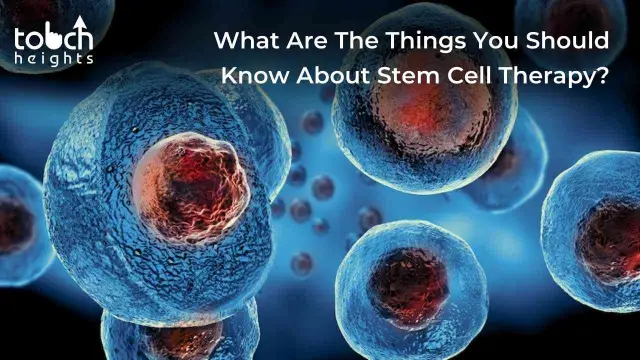Stem cells have great potential for improving our understanding and ability to treat a variety of illnesses, wounds, and other medical issues. Their potential may be observed in the use of stem cells for tissue transplants to cure diseases or injuries to the bone, skin, and surface of the eye, as well as in the use of blood stem cells to treat disorders of the blood, a therapy that has saved the lives of thousands of children with leukemia.
Numerous additional disorders are the subject of significant stem cell-based clinical trials, and researchers are always looking for novel applications for stem cells in medicine.
When selecting what is best for you, it is crucial to consult your primary care physician and other dependable members of your healthcare team about these Things to Know as well as any study or information you come across.
There are currently relatively few safe and efficient stem cell therapies available.
There are presently very few conditions for which stem cell therapies have been demonstrated to be effective. Hematopoietic (or blood) stem cell transplantation is the stem cell therapy with the best definition and the widest use.

Source: Wikimedia Commons - The healing process depends on stem cells within the implanted tissue, and some bone, skin, and corneal (eye) injuries and diseases can be treated by grafting or implanting tissues.
- These procedures are generally regarded by the medical community as safe and effective.
- All other applications of stem cells, however, have not yet been demonstrated in clinical trials and should be viewed as highly experimental.
When you choose an untested treatment, you stand to lose something.
It is understandable why someone could believe there is nothing to lose by trying anything new, even if it hasn’t been established when there isn’t an existing or effective therapy for sickness or condition. Unfortunately, very little actual benefit is promised by the majority of experimental stem cell therapies available for purchase worldwide, and the hazards are substantial.

Source: Wikimedia Commons - Complications may worsen your disease or symptoms, lead to new short- and long-term health issues, or both.
- You can lose your eligibility for upcoming clinical trials or treatment alternatives if you get one untested or experimental treatment.
- There are extra factors to take into account when travelling, such as the time spent away from friends and family.
Different stem cell types have various functions in the body.
Different kinds of stem cells originate from various locations throughout your body and serve various purposes. Discover more about the numerous stem cell kinds here.

Source: Wikimedia Commons Scientists are looking at the many roles tissue-specific stem cells could play in healing given that they have unique and limited capabilities. Without laboratory treatment, tissue-specific stem cells cannot differentiate into any other cell types other than those found in the tissues in which they are found.
It is improbable that the same stem cell therapy will be effective for all illnesses or situations.
Since stem cells that are unique to particular tissues cannot produce cells present in other tissues without careful lab manipulation, it is exceedingly unlikely that the same stem cell therapy would be beneficial for disorders affecting diverse tissues and organs inside the body.

Source: Wikimedia Commons With the use of pluripotent stem cells, such as embryonic stem cells or Induced Pluripotent Stem (IPS) cells, scientists have discovered how to create certain specialized cell types through a multi-step procedure. These cells provide an intriguing possibility to create novel therapeutic approaches since they can evolve into every type of cell in the body.
Clinical trials and commercially available experimental treatments are not the same things.
A procedure is not always a part of a research study or clinical trial just because it is experimental. Responsible clinical trials include the following key characteristics:
- They build on their preclinical evidence, which comes from laboratory studies on cells, tissues, and animals and shows that the treatment under test is probably safe and effective.
- Independent medical ethics committee oversight to safeguard participants’ rights
- Compliance with regulatory regulations, including registration in a reputable clinical trial registry
- The participant is not responsible for the cost of the new medication or monitoring
Conclusion:
Stem cell researchers are making significant progress in their understanding of healthy development, their understanding of the causes of disease, and their invention and testing of prospective patient therapies.
However, there is still much to understand about stem cells’ functions in the body and their ability for healing. The majority of illnesses, disorders, and injuries will soon have safe and efficient therapies available.







